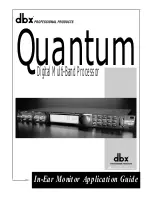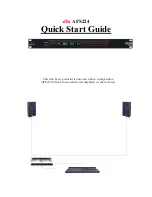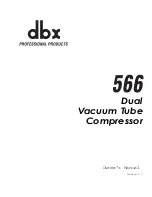
36
Section 3 - Operation
3.2 Equipment Setup
1. Position the UHP pump and power system
as close to the work area as possible. Make
sure the location is level and protected from
vehicle and foot traffic or other activities that
could cause damage to the unit or hoses. If the
power system is mounted on a trailer, make
sure the wheels are blocked.
2. Layout the high pressure water and vacuum
hoses from the UHP and vacuum power system
to the Ground Hog.
3.
Inspect hoses for chaffing and damage. Re
-
place or repair as required.
4.
Anti-chaffing added hoses if necessary.
5. Connect all vacuum hoses.
6. Make sure the UHP hose connectors are
clean, then properly connect the hose to the
UHP pump and the Ground Hog fitting on the
handle. Use a wrench to tighten the fittings
to the proper torque.
7. Check the swivel seal before operation and re-
place the seal if necessary. Then Connect the
UHP hose to the thru-shaft pump/swivel seal
connection and hand tighten the swivel nut.
Notice:
Only hand tighten the swivel nut. I
f the
swivel nut is overtightened by using a pipe
wrench or pliers, the swivel nut and thrust
cover will be damaged.
8.
Inspect all hose fittings. Make sure they are
tight and properly connected. When the in-
spection is completed the equipment is ready
for operation.
3.3 Routine Startup
Pre-Op Inspection Check List:
The Pre-operation Inspection in this section and the
Pre-Op Check List in Appendix 4 is provided as a
guideline. Additional items should be added to the
checklist as determined by company policy, your
operating environment, and other factors unique
to your situation.
The following instructions provide a general over-
view and introduction to the pre-operation (Pre-
Op) inspection. The Pre-Op Checklist provides
an itemized checklist that should be used when
performing a pre-operation inspection.
1.
Inspect all hoses for chaffing and signs of wear.
2. Verify vacuum hose connections are tight and
secure.
3. Check fuel levels and make sure you have
enough for the shift.
4.
Check fluid levels on power system. Refer to
the engine, UHP and vacuum system operat-
ing manuals.
5.
Check clean water tank level and fill if neces
-
sary.
6. Check all power system components for oil
leaks, damaged or loose bolts and parts.
7. Evaluate the blasting surface and the material
to be removed. Choose the appropriate spray
bar and nozzles best suited for the job.
Notice:
You should consider the desired or expected
profile of the blasted surface in your selec
-
tion. There are many variables that affect
blasting efficiency, productivity and the pro
-
file of the blasted surface. As the operator
becomes more experienced, the selection
process becomes more refined and easier.
Refer to the visual impact guide for addi
-
tional information.
8. Grease hydraulic pump thru-shaft bearing and
caster wheels.
9. Make sure the spray bar protector is in place
and secure.
10. Check the dirt shield and wear brush settings.
Adjust if necessary.
11.
Verify standoff height. Adjust if necessary.
12. Inspect the Ground Hog for loose components,
worn caster wheels and damage.
13.
Check fluid level in the hydraulic brake res
-
ervoir.
Summary of Contents for HT1000SR
Page 2: ...2...
Page 6: ...6 NOTES...
Page 8: ...8 NOTES...
Page 18: ...18 NOTES...
Page 34: ...34 NOTES...
Page 76: ...76 NOTES...
Page 77: ...77 Appendix 3 Tools Spare Parts Mobile Tool System...
Page 80: ...80 NOTES...
Page 86: ...86 NOTES...
Page 89: ......
















































